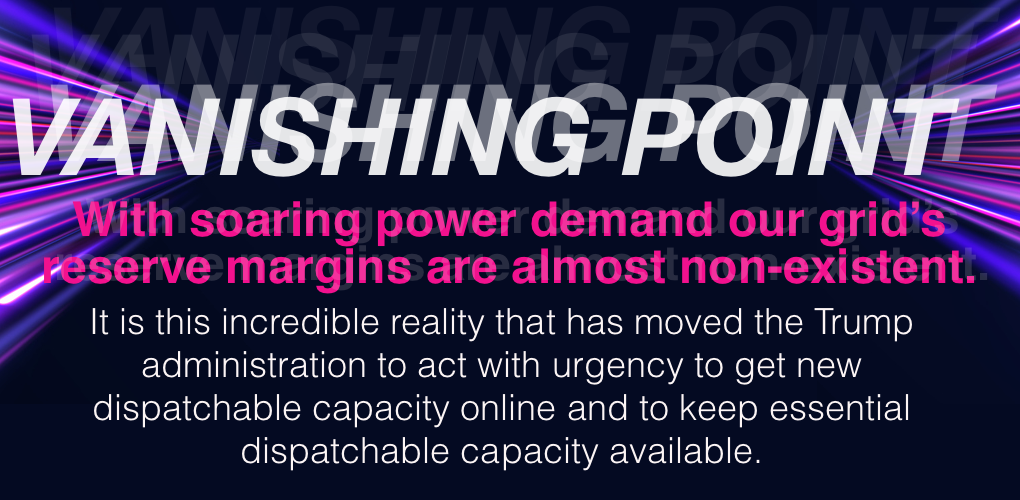
Yes, it is an Energy Supply Emergency
With so much understandable focus on meeting soaring new power demand from the AI revolution and hyperscale data centers, it’s easy to forget the nation entered this moment already facing a grid reliability crisis.
The reshoring of industry, electrification and the rapid loss of dispatchable power were already enough to push grid operators to warn of imminent power supply shortfalls at the very start of the Biden administration. The data center boom and AI arms race have now made a deeply challenging situation doubly so.
The PJM grid, the nation’s largest and home to the world’s data center capital in northern Virginia, has become the bellwether for the nation’s ability to affordably and reliably manage the collision of eroding power supply with soaring new power demand.
Not only does PJM meet the electricity needs of 65 million Americans in 13 states and the District of Columbia but it has long been a grid reliability bulwark for surrounding regions.
According to new analysis from the Federal Energy Regulatory Commission (FERC) and North American Electricity Reliability Corp., PJM helped bail out surrounding grids this January by exporting nearly 8 gigawatts (GW) of power during crippling winter storms that pushed 71 GW of capacity offline across much of the nation.
And yet, the stability it offers may be disappearing.
“You can’t export something you don’t have, and as PJM loses its surplus generating resources, there won’t be anything to export,” FERC Chairman Mark Christie observed at a recent meeting. “That’s a huge problem.”
Vanishing Reserves
Last year, PJM’s Independent Market Monitor warned the market was likely to lose an alarming 58 GW of capacity by 2030, almost all of it traditional dispatchable capacity.
PJM now expects peak summer power demand to surge to 210 GW by 2035, a jump of 58 GW in a decade.
Once boasting the largest reserve margin of any independent market, PJM will likely be short of power by 2030. Instead of power provider, PJM will need help itself.
Manu Asthana, the president and CEO of PJM, recently told Congress, “We will need to slow down the retirement or restriction of existing generation until replacement capacity is deployed. … Frankly, we see this as the single largest risk in the energy transition.”
The challenge is immediate. It takes 18 months to build and connect a data center with the power needs of a small city, but it can take a decade or more to build the power plant and infrastructure needed to serve it.
The International Monetary Fund recently observed that “In northern Virginia, which features the largest concentration of data centers in the world, the square footage of server-filled warehouses is now roughly equivalent to the floor space of eight Empire State Buildings.”
The International Energy Agency, in its recent AI outlook, found the U.S. is poised to consume more electricity in 2030 for processing data than for manufacturing all energy-intensive goods combined, including aluminum, steel, cement and chemicals.
It is this incredible reality that has moved the Trump administration to act with urgency to get new dispatchable capacity online and to keep essential dispatchable capacity available.
The administration’s coal-focused executive orders are a reflection of the magnitude of the challenge and the value of the existing coal fleet. Losing more of these fuel-secure, dispatchable plants – with electricity supplies already so tight – is a blunder the nation’s grid reliability can’t shrug off.
- On April 23, 2025
